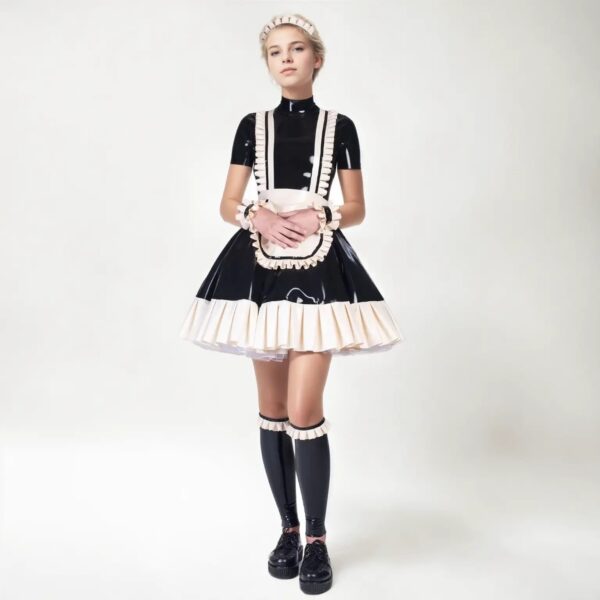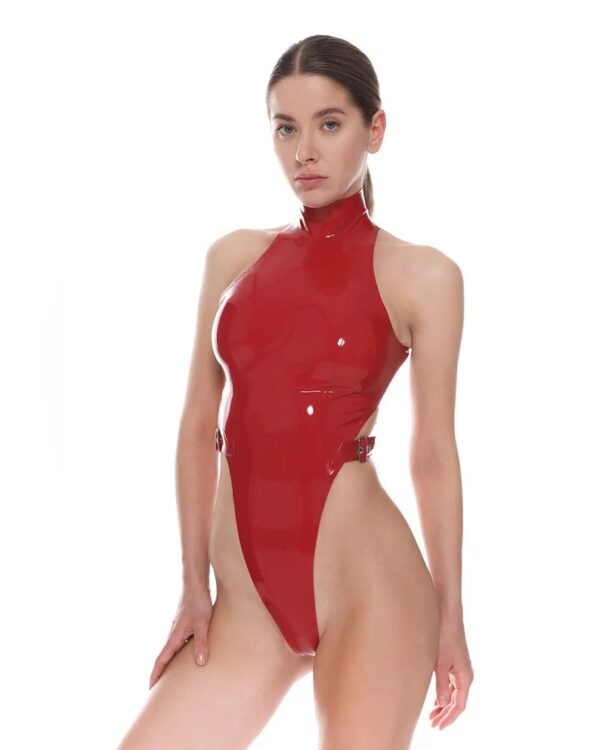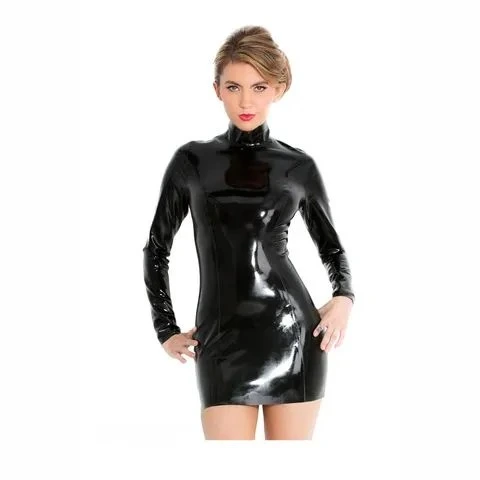
In the eclectic fashion world, latex is quite the immaculate and daring choice of ensembles. Latex catsuits stand among the most prominent items in this category-a uniquely and compellingly designed piece of attire. But what makes them so omnipresent and attractive to everyone else in fashion-land? In telling this story, we will dive into the reason why latex catsuits are where fashion meets fantasy in perfect unison, combining an addictive edge of high avant-garde with an elegance, mystery, and expression of panache.
The Allure of Latex Clothing
When we talk of latex clothing, and in particular, latex catsuits, we conventionally think of boldness and sensuality. The very fact that latex is smooth and shiny and very sleek, wraps soft, embracing the body such that curves become accentuated and parallel the figure favors, transcends beyond that high-end fetish, to produce magic. Latex is a singular kind of fabric that embraces the body, allowing a second-skin effect that shapes a person’s contours. For this reason, it has found a favored place in haute couture and fetish fashion and even cosplay.
It draws stunning attention with its glossy finish: confidence simply oozes from a person clad in latex-the edgy quality of latex transforms the ensemble into a true show-stopper that merely traditional fabric cannot. Latex catsuits have become an option for many fashion lovers who express individuality through sheer flamboyance. High-fashion, runway-goings, or simply an ignitions-planned night out, the latex catsuit is an absolute statement piece that turns heads and evokes conversations. And the visual sense does not stand there; latex-as-skin is so smooth and audacious that many people are so into this that they are hardly able to take it from their minds.
The Rise of Latex Catsuits in Mainstream Fashion
Latex catsuits have long been staples of the alternative fashion communities; for some time now, however, they have gained acceptance into the world of mainstream fashion. With their high-gloss finish and sculptural qualities, many designers include latex pieces into their collections. Whether showcased in the full catsuit version or as accent-pieces in ensembles, latex is celebrated as a versatile form of fabric that injects drama and sophistication into any look.
From high-profile appearances at events to complicated red-carpet moments with models and actors clad in latex, latex has found its way into mainstream. Celebrities such as Kim Kardashian and Lady Gaga have donned the catsuit and maintained that where latices are, fashion is.
The Great Boost of Confidence in Latex Catsuits
One of the greatest aspects of the latex catsuit is that it fills the wearer with confidence. The slim fit and high sheen can be a driving force that transforms the attitude of a person into one of empowerment and seductiveness. It’s the ideal outfit for the one wishing to tap into the inner self and exude boldia and fierceness. Latex catsuits are empowering and give endless possibilities to the wearer. They open up various alternative style options for a photo shoot, themed party, or night out.
What is particularly unique about latex catsuits is their ability to cater to a wide array of tastes. They come in different colors, styles, and finishes (such as matte or shiny). A latex catsuit can be tailored to fit anyone’s specifications. From full-length suits to those with cut-out details, latex provides innumerable avenues for customizations that make it easy to find the right fit for any occasion.
Latex Catsuit Care
While latex clothing can be incredibly flamboyant and eye-catching, the material requires special treatment to remain shiny and usable for long. It is very delicate. Sunlight, heat, and rough wear can be agents of its decay. Therefore, to bring the best qualities in a latex catsuit, its proper storage and gentle handling are very important. This guide will discuss some tips for maintaining a lovely latex catsuit:
1. Gentle Washing: Always wash latex with lukewarm water and with mild soap. Chemical agents or really harsh cleaning agents that can damage the material absolutely must be avoided.
2. No Sharp Objects: Jewelry or fingernails capable of piercing latex can never be forgotten when you get an outfit on.
3. Proper Storage: Store your latex catsuit in a cool, dry place away from the direct rays of the sun; on a padded hanger should also maintain its shape.
4. Latex Shine Spray: Spray the latex with a latex-safe shine spray after each wearing to keep it looking shiny. Proper maintenance will ensure that the latex catsuit is a beautiful, durable piece of fashion that can be worn time and again.
Latex Catsuits and Fetish Fashion
Although latex catsuits are now embraced as mainstream fashion, they have a special place within the fetish and alternative fashion community. The dapper, shiny material is often seen on fetish wear given how well form-fitting it is and the sensuous aesthetic it creates. From humble beginnings in pirate attire to its ever-increasing prominent status in mainstream fashion, latex has always been a mold for the BDSM fashion ethos, with most enthusiasts being drawn to it for tactile and alternative visual effects.
Through fetish culture, latex catsuits that have become popular have, through their very nature, casually helped destigmatize the concept that the outfits belong to fetish clothing and instead sit among other clothing trends. Latex is worn today in the public and private domains alike, not just by one group of people, but by everyone, from perverts and lunatics to normal, everyday folk.
A Latex Catsuit Is An Exciting Item.
Classic in its design, flattering in its cut, and endless in its styling options, the latex catsuit is a piece that epitomizes the point of intersection between fashion and fantasy. For all occasions-from a special event to daily use-latex catsuits allow individuals to showcase segments of their personalities, creativity, and confidence. If you have never tried on latex, now is the time to experiment.
The design and the fantasy allure of latex catsuits make inventing your one-of-a-kind style unforgettable and powerful for everyone. It allows for manifestation of concepts and styles like classic black, vibrant colors, and interesting new pieces that will turn heads.










